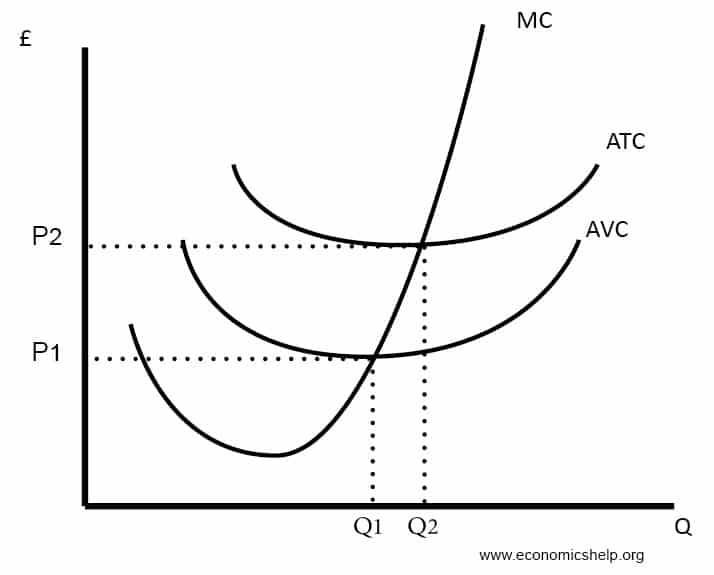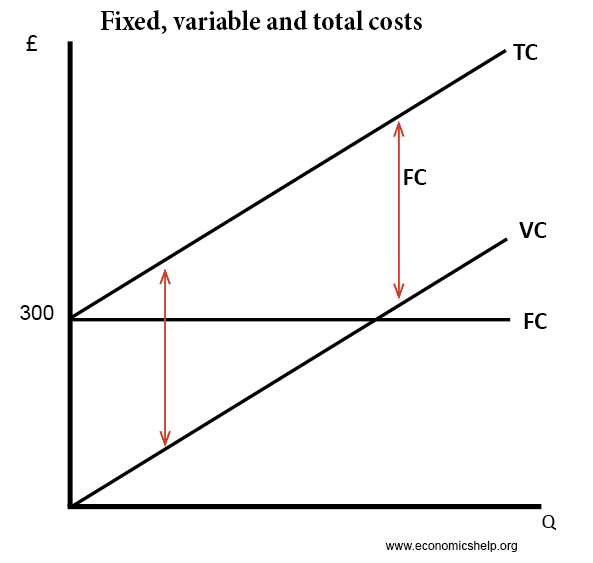Explain the Different Types of Cost Concepts
Different types of costs are used in different situations. An important first step in studying management accounting is to gain an understanding of the various types of costs incurred by organizations.
Indirect costs on the other hand are expenses unrelated to producing a good or service.

. Cost of sales only when sold. And ii Predetermined Costs. They form part of inventory and are charged against revenue ie.
These are all those expense item appearing in the books of account hence based on accounting cost. In the above example fixed costs are always 1000. Relevant Cost and Irrelevant Cost.
Consequently when reviewing a business case to determine which path to take it is useful to understand the following cost concepts. Conversely a variable cost such as direct materials will. There are various types of cost.
Classification of Cost Types of Cost. 1 Types of Costs. Management accountants need to understand cost concepts because they are vital in many areas of planning control and decision-making.
Incremental Costs and Sunk Costs 6. The cost concepts are. Variable Cost It is the cost of variable inputs used in production.
The kind of cost concept to be used in a particular situation depends upon the business decisions to be made. So in any business activity concerned with making maximum profit from available resources some information on cost is essential. Explicit Cost and Implicit Cost 5.
2 Infographic of Types of Costs. Different types of costs have differing characteristics. Some of the types are.
Past Cost and Future Cost 4. Costs can be classified in different ways. Outlay costs include the actual expenditure of funds on factors like material rent wages etc.
Standard Costs on the other hand is a predetermination of what actual costs should be under projected conditions serving as a basis of cost control and as a measure of product efficiency when ultimately aligned actual. Outlay and Opportunity Costs. What Are the Types of Costs in Cost Accounting.
Short-Run and Long-Run Costs 5. Accordingly costs are classified into. Period costs include non-manufacturing costs ie.
On the basis of Nature of Costs Fixed Cost It is the cost of fixed inputs used in production. Cost Concept 1. Actual Cost and Opportunity Cost 2.
A direct cost includes raw materials labor and. A fixed cost such as rent does not change in lock step with the level of activity. Fixed Variable and Mixed Costs.
Actual Cost and Opportunity Cost 3. In other words incremental cost is the total additional cost related to marginal quantity of output. The following points highlight the top nine cost concepts used in decision making.
Even if your output changes or you dont produce anything your fixed costs stay the same. Past Cost and Future Costs 4. Avoidable Cost and Unavoidable Cost 9.
On the other hand opportunity costs are the costs of missed opportunities. Product costs - are inventoriable costs. Practically budgeted costs include standard costs both are predetermined costs and their amount may coincide but their objectives are different.
Outlay cost concepts are actual expenditures and the books of accounts record them. Period costs - are not inventoriable and are charged against revenue immediately. The following points highlight the top thirteen types of cost in cost concept analysis.
In other words it compares the policy chosen and policy rejected. All manufacturing costs direct materials direct labor and factory overhead are product costs. These costs vary with the change in volume of production.
Fixed Cost Variable Cost Average Cost and Marginal Cost Opportunity Cost The resources of any firm operating in the market are limited and investment options are many. Private Cost and Social Cost2. Historical Costs are those costs which are taken into consideration after they have been incurred.
These costs do not vary with the change in volume of production. Costs may also be classified according to the time element in it. Short-run Costs and Long-run Costs and Others.
Out lay cost also known as actual costs are those expends which are actually incurred by the firm these are the payments made for labour material plant building machinery traveling transporting etc. Direct costs are related to producing a good or service. Fixed costs might include the cost of building a factory insurance and legal bills.
Marginal cost is the cost of producing an additional unit of output while incremental cost is defined as the change in cost resulting from a change in business activities. The various relevant concepts of cost are. Type of Cost 1.
Variable Costs VC Costs which depend on the output produced. Fixed and Variable Costs 6. There are manufacturing costs and non-manufacturing costs direct and indirect costs product and period costs controllable and uncontrollable costs fixed and variable etc.
Out of Pocket Costs 3. Incremental Costs and Sunk Costs 3. Opportunity costs and Outlay costs.

Accounting Concepts In 2022 Accounting Principles Accounting Accounting Basics

Accounting Taxation Costing Concepts Cost Sheet Objectives Types Of Cost Centre Methods Of Costing In 2022 Cost Sheet Accounting And Finance Cost Control

Accounting Concepts In 2022 Accounting Principles Accounting Accounting Basics

Cost Object Meaning Advantages Types And More Accounting And Finance Finance Investing Accounting Basics

Accounting Taxation Costing Concepts Cost Sheet Objectives Types Of Cost Centre Methods Of Costing Cost Sheet Managerial Accounting Cost

Cost Based Pricing Meaning Types Advantages And More In 2021 Bookkeeping Business Learn Accounting Business Basics

10 Types Of Costs In Economics Economics Economics Lessons Writing Services

Pin On Basic Concepts In Economic Business And Finance

Cost Behavior Meaning Importance Types And More Bookkeeping Business Accounting Education Financial Management

Pin By Raisa On Economics Economics Notes Concept Of Economics Economics

Accounting Taxation Costing Concepts Cost Sheet Objectives Types Of Cost Centre Methods Of Co Cost Sheet Project Management Tools Accounting And Finance

Concepts Of Cost Revenue Class 11 Cbse Class 12 Economics Pdf Economics Notes Economics Basic Concepts

This Infographic Describes What Is Cloud Computing What Are Its Benefits What Are The Different Types Etc What Is Cloud Computing Cloud Computing Infographic

Accounting Concepts Accounting Accounting Principles Learn Accounting

Types Of Costs And Their Basis Of Classification Accounting Education Cost Accounting Bookkeeping Business

Dynamic Qr Code Vs Static Qr Code Types Of Qr Codes Qr Code For Marketing Qr Code Blogs Art Coding Qr Code Dynamic




Comments
Post a Comment